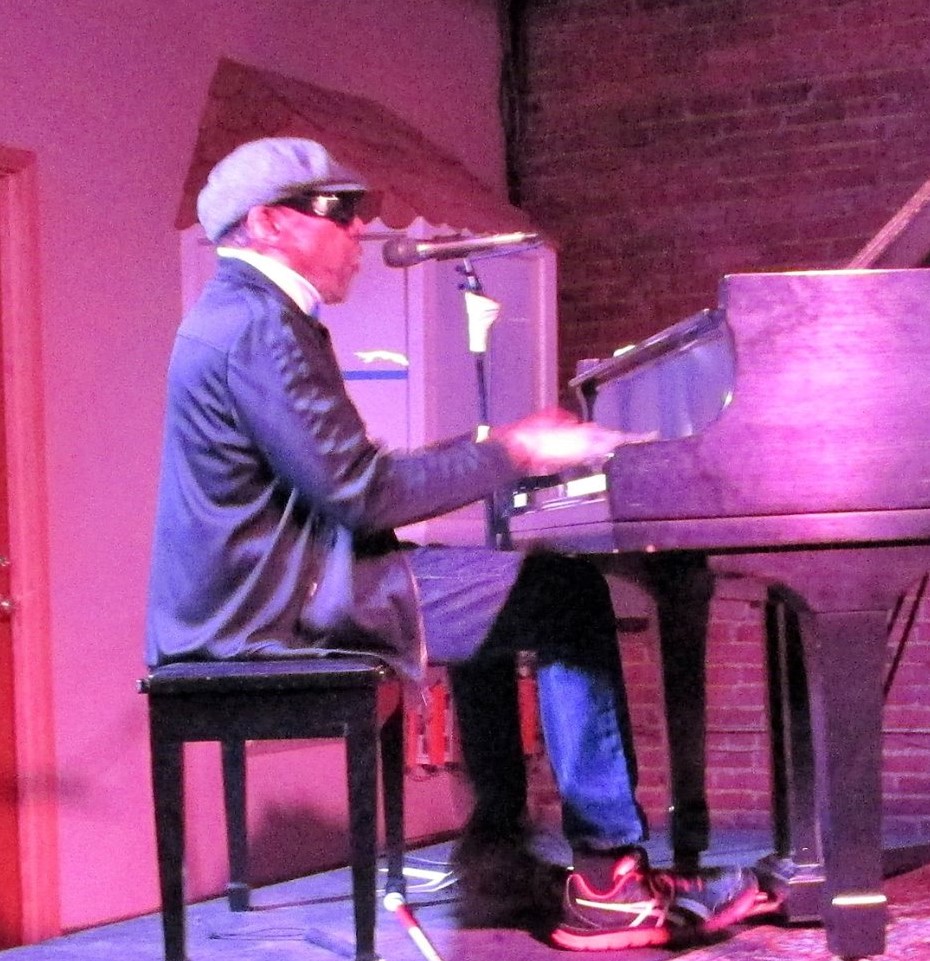You’ll hear about two dozens performances by New Orleans piano players on this week’s show. But only after I introduce four of the members of one my favorite bands, the New Orleans Nightcrawlers who have a Grammy nomination for their latest record, Atmosphere. You’ll also hear three tracks from that record. Go ahead and get it started.
One of the perks of hosting a radio show is the excuse to score interviews with musicians I love. And recently I had the chance to zoom interview four of the nine members of the New Orleans Nightcrawlers. This brass band is what sold me on New Orleans music. A band that both honors tradition and innovates. Their latest album “Atmosphere” is a just the latest example. It made my favorites of 2020 list. But more importantly its up for a grammy which will be awarded in March this year. (Postscript: They won!)

After Jon Cleary opens the show with “Po Boy Blues,” you’ll hear from saxophonist Brent Rose, who grew up in Lynnwood Washington before landing in New Orleans via a stint in the Marine Corps Band. He introduces his song “Gentilly Groove”.
Craig Klein, who has been featured on this show before, explains the importance of the band’s rhythm section which consists of New Birth and Preservation Hall Brass Band drummers Caytonio “Tanio” Hingle and Kerry “Fatman” Hunter.
Matt Perrine, who plays tuba and produced the record, comes on before the third song to explain the very New Orleans approach to getting nine high-demand musicians together long enough to record an album. (Hint: Food is involved.)

To give you a sense of how busy these musicians are, Kevin Clark lays out what a typical work week looked like for him and his trumpet before COVID restrictions. In normal times, these musicians perform pretty much every day in a wide range of projects and gigs. A grammy would be a big deal for them and yet, even if they win, you will likely still be able to see them in a New Orleans night club or restaurant plying their craft once live music moves back indoors.
After the Nightcrawlers three songs, its time for more piano. In fact, the rest of the show features performances by two dozen New Orleans piano players – Professor Longhair, Dr. John, Fats Domino, Jelly Roll Morton, Allen Toussaint, Ellis Marsalis, Marcia Ball (honorary New Orleanian), James Booker, Tuts Washington, Champion Jack Dupree, Josh Paxton, David Torkanowsky, Tom McDermott, Amanda Walker, Henry Butler . . .ah geez, just listen to the show will ya!
The program finishes with a New Orleans piano player who has played Olympia a few times. I promised on the show to share a link to Davis Rogan’s Facebook page where he does live performances every Wednesday though some times its on Thursdays. Here it is.












 Cleary’s latest album, GoGo Juice, has been nominated for this year’s Best Regional Roots Grammy. A native of England, he’s lived all of his adult life in New Orleans — a city he chose after falling in love with New Orleans R&B and funk at a tender age. Now, at 53, he has firmly rooted himself as a New Orleans piano “professor,” a true practitioner of the New Orleans sound who has broken fresh ground with new compositions and arrangements.
Cleary’s latest album, GoGo Juice, has been nominated for this year’s Best Regional Roots Grammy. A native of England, he’s lived all of his adult life in New Orleans — a city he chose after falling in love with New Orleans R&B and funk at a tender age. Now, at 53, he has firmly rooted himself as a New Orleans piano “professor,” a true practitioner of the New Orleans sound who has broken fresh ground with new compositions and arrangements.
 “The studio was like a Mardi Gras reunion, everybody laughing and talking, telling stories all at the same time. But once we got settled, the vibe was there and the music just flowed.”
“The studio was like a Mardi Gras reunion, everybody laughing and talking, telling stories all at the same time. But once we got settled, the vibe was there and the music just flowed.”